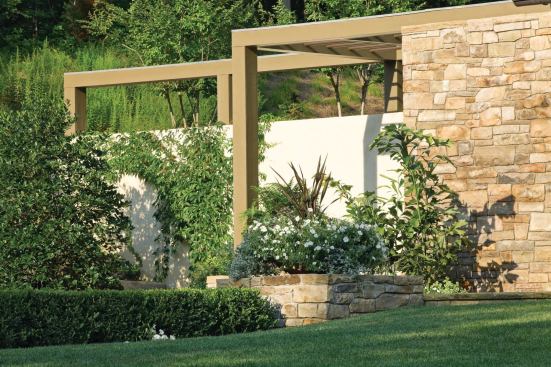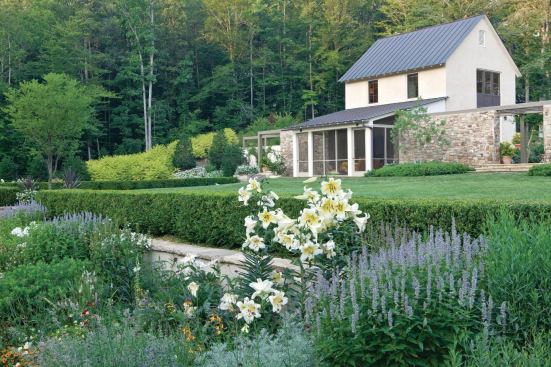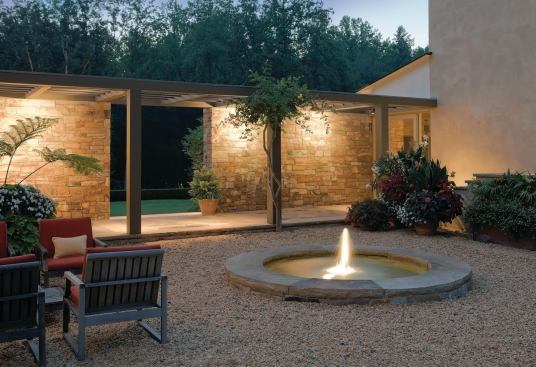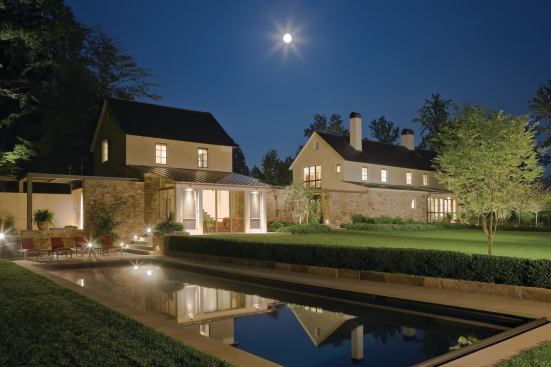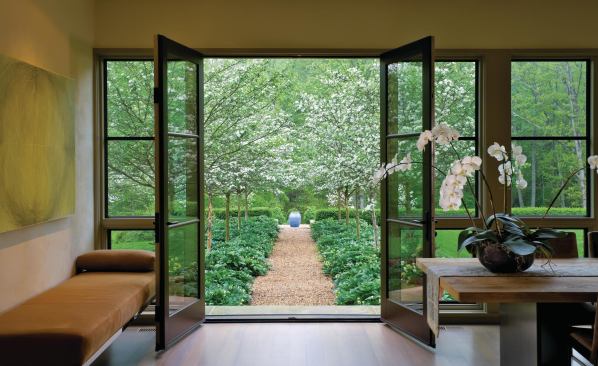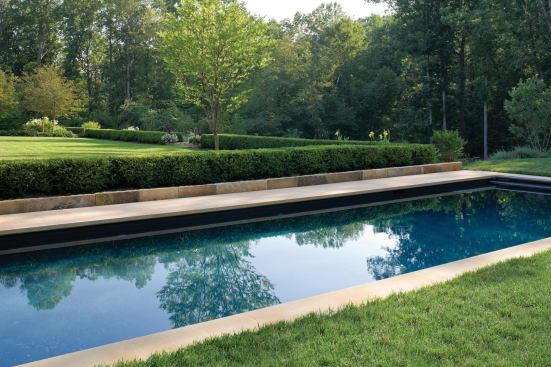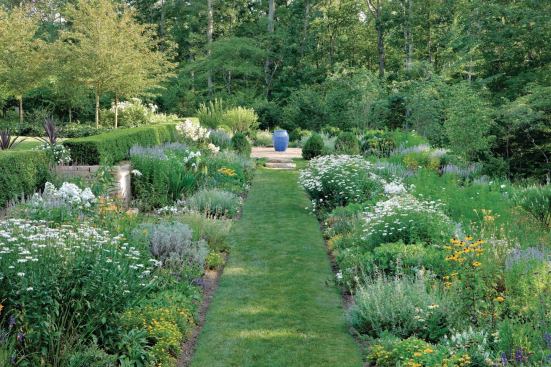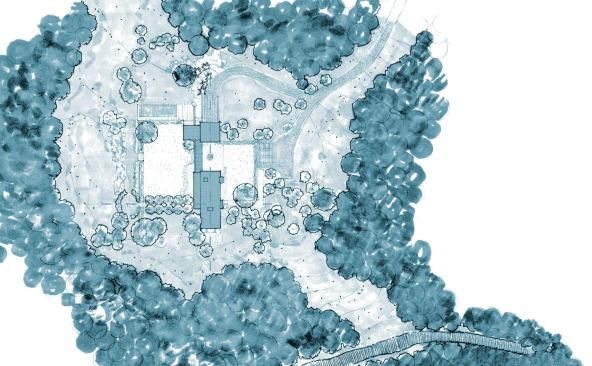Roger Foley
Arentz Landscape Architects designed the grounds at Running Ceda…
Landscape architect Richard Arentz’s house and gardens reflect rural Orlean, Va.’s vernacular simplicity, yet there’s something almost urban about them. On rolling, densely wooded terrain, Arentz carved out a podium for a house and a daisy-chain of outdoor social spaces, each with a different energy and focus. It’s hard to think of a more gracious place to entertain friends, which Arentz does year-round.
The project, Running Cedar, ties the house’s floor plan to the outdoors to create a sense of both spaciousness and intimacy. Arentz worked with architect Richard Williams to design the two stucco buildings—a main house and separate guest quarters above a two-car garage. They’re organized simply along a north-south axis with a tawny gravel courtyard between, and linked by a monolithic stone wall that acts as a spine. “The rooflines are on the same plane, so the courtyard is simply a void between the two,” Williams says. “The gables have this dialogue between them, like a street with tall gables addressing one another.”
The buildings’ clean lines move into the landscape, overlapping with entertaining-scaled spaces that give the house context. A low stone wall overlooking an escarpment and the Rappahannock River guides visitors to the front door. Once inside, the narrative continues. The first-floor rooms are fluid, yet each has a curated view that sets the stage, even in winter. Straight ahead are striking views of a hawthorn allee, on axis with the entry walk, that leads to a sunken perennial border at the garden’s rear edge. To the left of the foyer, visitors step through a stone chimney wall to the pavilionlike living room—the closest spot to the river 100 feet below. “It feels like you’ve moved beyond the house to the river gorge when you move around the big chimney mass,” Williams says. Arentz adds that at large parties, guests often split off and sit on the adjacent informal patio, on the ravine’s wild edge.
The social hub, though, is the open kitchen/sitting room on the opposite side of the house. It spills out to the courtyard—a third room open to the sky that, at 40 feet long by 30 feet wide, comfortably seats 30 for dinner. The circular fountain there was inspired by the livestock troughs in local pastures. “I was going to do a seat height of 18 inches, but it would have blocked the view of the water from the kitchen,” Arentz says. “I lowered it to a 9-inch curb.”
The courtyard also is part of the axial progression, through a break in the wall, between the front and rear lawns and the lower flower border. A pergola spans that gap to join the main house with the guest house, screened porch, and pool terrace. The porch, which pops out through the stone spine, is in constant use during summer.
“One of the highest compliments I’ve had was from someone who was here for a dinner party and later commented, ‘I loved being at your stone house,’” Arentz says. “The judicious use of stone is what people walk away with because you’re sitting next to it, walking by it, touching it.” Inside and out, a limited material palette—wood, metal, stucco, sandstone, and flagstone—adds up to a soft-spoken house that looks outside itself for ornament.
